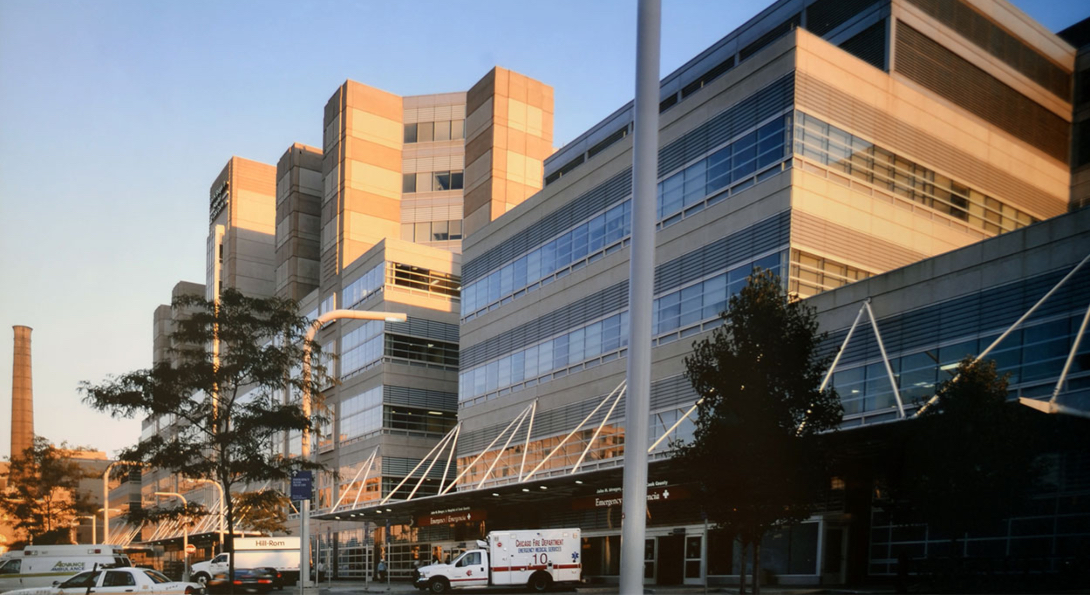Preparing Safe Workplaces to Reopen the Economy

SPH's Occupational Health Service Institute is working to ensure essential workers and those returning to work are protected.
Story text, continued.

Debates on the best time to “reopen” the U.S. economy are filling plenty of air time on cable news. UIC’s Occupational Health Service Institute (OHSI) is tackling the actual science behind the question.
The Institute is a part of the School of Public Health’s Great Lakes Centers for Occupational and Environmental Safety and Health, which is a World Health Organization Collaborating Center. As one of five service agencies within UI Health, OHSI consults with businesses, unions, governmental bodies and community organizations on improving, promoting and maintaining the health of workers and communities.
During the COVID-19 outbreak, businesses and worker groups are relying on OHSI for technical knowledge toward protecting essential workers still at workplaces and preparing protocols for workers sheltering in place ready to return to the workplace.
“We’re in a difficult position. Our advice can have a significant impact on people’s lives, yet it must be formulated based only on incomplete evidence. Fortunately, we’re learning more about this outbreak every day,” said Dr. Peter Orris, professor of environmental and occupational health sciences and director of the Institute.
OHSI’s clients seeking counsel on COVID-19 preparation and mitigation include Abbott Laboratories and Baxter, two Chicago-area pharmaceutical companies. Among public agencies, Cook County Health has sought advice on strategies for John H. Stroger, Jr. Hospital of Cook County and its network of clinics.
The Institute is working with numerous employee unions to protect essential workers. Unite Here Local 1, the hotel workers union in Chicago, is preparing for hotels in use as isolation space for COVID-19 patients not in need of hospitalization. A Teamsters union representing employees at a Merck facility in Pennsylvania is working with OHSI on return-to-work plans, and Teamsters Local 700, which represents guards at the Cook County Jail, recommended OHSI to the Cook County Sheriff’s Department to consult on health and safety issues at the jail. The Sheriff’s Department is now a client.
Story text, continued.

SPH’s Dr. Susan Buchanan, clinical associate professor of environmental and occupational health sciences, is working with a Chicago-area company considered an essential business. This company produces supplies used in the response to COVID-19, meaning protecting the company’s workforce remains a paramount concern. Her work has focused on managing workers who are ill, workers who are exposed to family members or others who are COVID-19 positive and evaluating employee travel.
With Buchanan’s guidance, the company has increased cleaning and disinfecting of surfaces, built in social distancing, rotated workers into different shifts and screened all contract employees and delivery personnel before entering company property. The company has been aggressive with contact tracing while considering further steps such as mask usage, temperature screening and arrangements for high-risk workers, such as pregnant employees and those with diabetes.
“None of these have answers that are written anywhere, which has made it really stimulating and stressful at the same time,” Buchanan said. “We’re not infectious disease experts, but [those of us] who are certified in occupational health bring a really unique perspective to this type of work that is worker-centric.”
As of this article’s publication, the question of when COVID-19 positive workers are ready to return to work is plagued by problems with testing and unknowns in the science. The current CDC advisory indicates if a worker has passed 3-4 days without a fever and shown improvement of other symptoms, they can safely return to the workplace with a surgical mask.
This protocol altered the initial plan that called for two negative smear tests, a standard that was challenged because some people seem to stay positive for weeks even though they are no longer infectious.
“We’re hoping that antibody testing can help us with this,” Orris said. “Immediate and longer-range antibodies should indicate you are immune and indicate when you are able to go back to work.”
Yet this strategy may have to be modified if the report from South Korea that about 30 percent of on group of people recovering from COVID-19 have not developed specific neutralizing antibodies.
“We’re struggling with the same issues the CDC is struggling with, but we’re learning from and relying on the CDC,” Orris said. “This remains a moving target.”